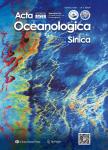Significant wave height estimation using azimuth cutoff of C-band RADARSAT-2 single-polarization SAR images
Significant wave height estimation using azimuth cutoff of C-band RADARSAT-2 single-polarization SAR images作者机构:State Key Laboratory of Satellite Ocean Environment Dynamics Second Institute of Oceanography State Oceanic Administration
出 版 物:《Acta Oceanologica Sinica》 (海洋学报(英文版))
年 卷 期:2015年第34卷第12期
页 面:93-101页
核心收录:
学科分类:0710[理学-生物学] 07[理学] 0908[农学-水产] 0707[理学-海洋科学] 08[工学] 0816[工学-测绘科学与技术]
基 金:The National Natural Science Youth Foundation of China under contract Nos 41306191 and 41306192 the National High Technology Research and Development Program of China(863 Program)of China under contract No.2013AA09A505 the Scientific Research Fund of the Second Institute of Oceanography,State Oceanic Administration of China under contract No.JG1317
主 题:SAR single polarization significant wave height azimuth cutoff
摘 要:This paper proposes two simple models, look-up table(LUT) model and empirical model, to directly retrieve significant wave height(Hs) using synthetic aperture radar(SAR) azimuth cutoff(λc). Both models aim at C-band VV, HH, VH, and HV single-polarization SAR images. The LUT model relates Hs to λc, while the empirical model relates Hs to both λc and SAR range-to-velocity(β). The LUT model coefficients are derived by simulation under different sea states and observation conditions, which depend on incidence angle(θ), wave direction(dw), and βbut are independent of polarization. The empirical model coefficients are obtained by fitting the collocated data,which only depend on polarization. To fit empirical model coefficients and validate the two models, C-band RADARSAT-2 fine quad-polarization(VV+HH+VH+HV) single-look complex(SLC) SAR images and collocated buoy data are collected. Retrieved Hs, using Yang model and the two models proposed in this paper from four kinds of polarization SAR data, are compared with buoy Hs. Results show that both LUT and empirical models have the capacity of retrieving Hs from C-band RADARSAT-2 co-polarization SAR data, while Yang model is not suitable for these kinds of SAR data. Moreover, the empirical model is also valid for cross-polarization SAR data showing clear ocean wave stripes.



